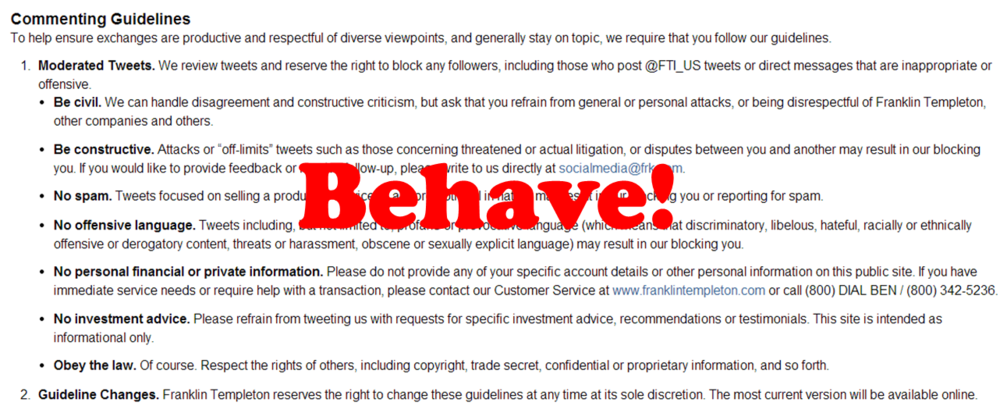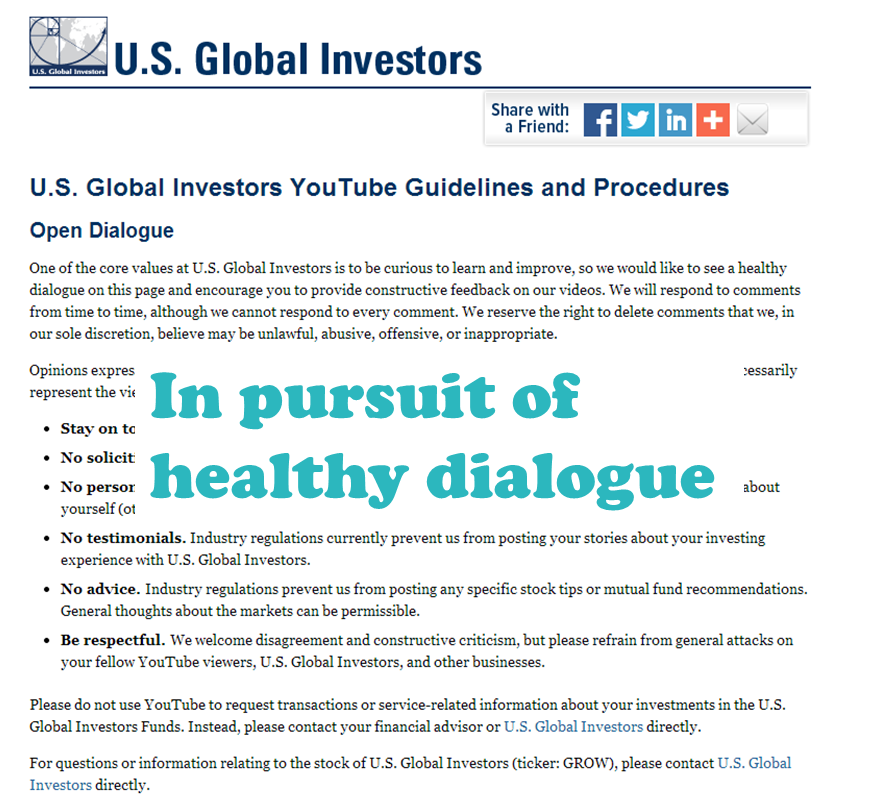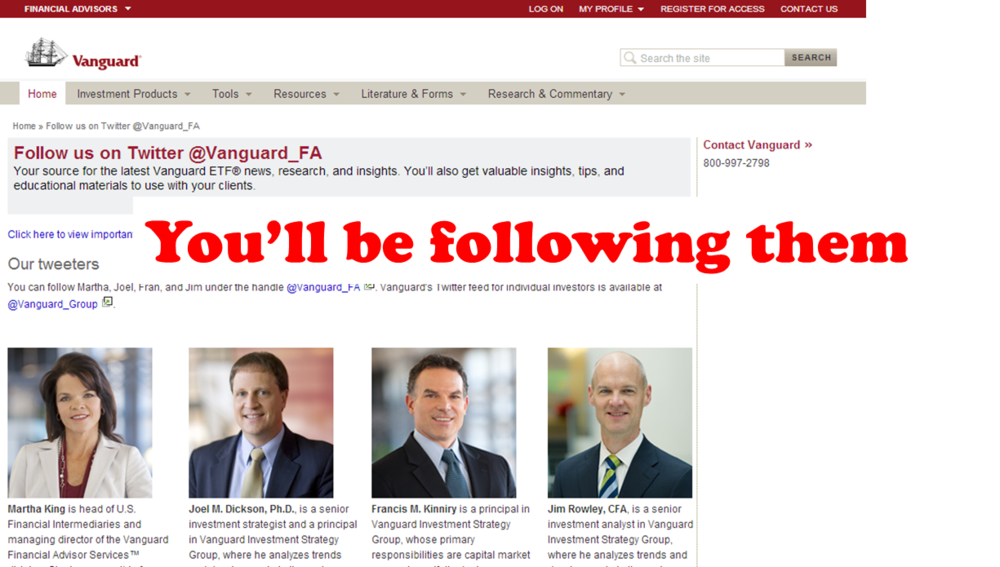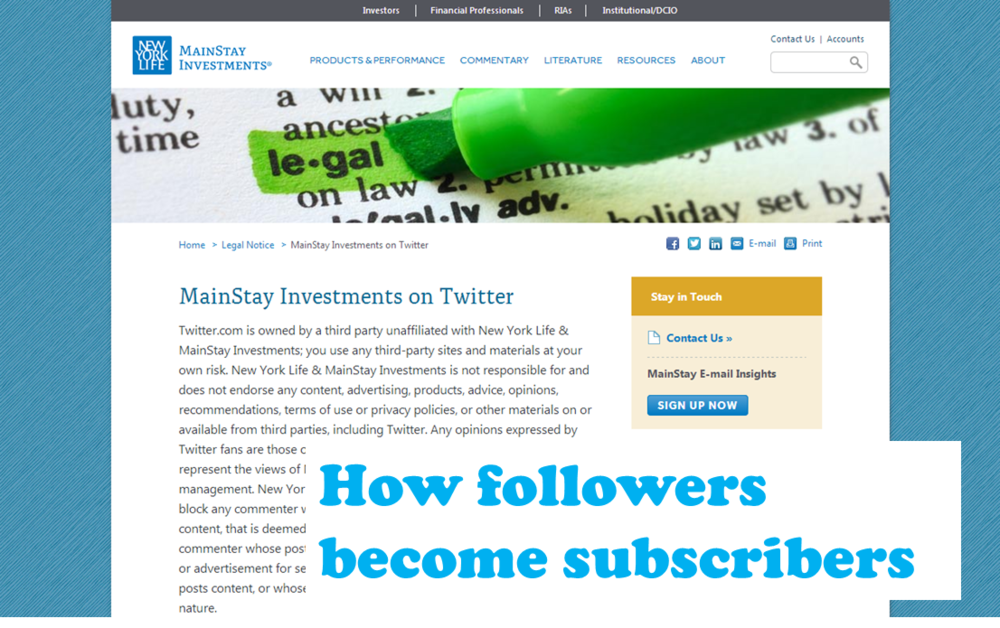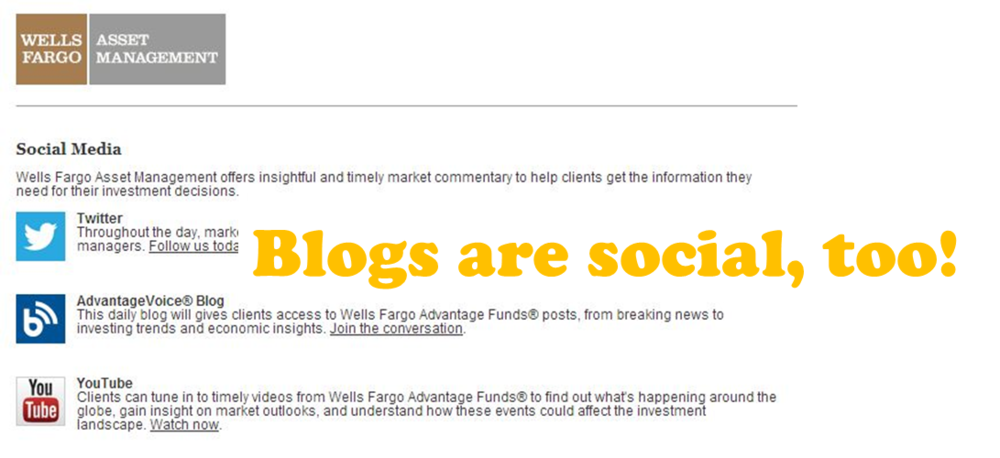There's More To A Social Media Landing Page Than Disclosure
/ TweetFirms whose every public communication needs to be evaluated in terms of its compliance with regulations can sometimes inadvertently mistake who the customer is. The customer isn’t the regulator. There’s more to do, more to be communicated once the regulations have been satisfied.
A case in point: What’s being linked to from many investment firms’ social profiles.
Let's review:
 Establishing a presence on social networks is no cakewalk for mutual fund and exchange-traded fund (ETF) marketers. It’s a cross-functional tightrope, and the operating guidelines can take months to pull together. Even after all that, Legal and Compliance may have reservations, and there can be the veiled threat that it could all be undone at any time.
Establishing a presence on social networks is no cakewalk for mutual fund and exchange-traded fund (ETF) marketers. It’s a cross-functional tightrope, and the operating guidelines can take months to pull together. Even after all that, Legal and Compliance may have reservations, and there can be the veiled threat that it could all be undone at any time.
To prevail and move forward, marketers pledge to be on their very best behavior. There's no appetite for revisiting what's already been approved, and working well enough.
- And yet, there's an opportunity to consider: The establishment of an account on a social network gives that account the potential for visibility that far exceeds any other unpaid opportunity on an Internet presence with highly engaged traffic.
Specifically, the ability to link from the home state of the social account—the bio of the Twitter profile or the About pages on Facebook or YouTube (where more space is available)—provides a near priceless chance to move people interested in what you say on a social platform to your own domain.
 The opportunity here is different from online advertising in at least three ways: It has no expiration date, your potential reach is limitless and yet no minimum number of impressions is assured, and there's no charge.
The opportunity here is different from online advertising in at least three ways: It has no expiration date, your potential reach is limitless and yet no minimum number of impressions is assured, and there's no charge.
As with advertising, the page you link to needs to be well considered. The best practice for online ads is to direct traffic to a landing page customized to anticipate just that traffic.
However, many firms don't offer a link to a social-audience landing page to visitors to their social profile pages. There are plenty of instances where social profiles link to landing pages that are no more than the firm’s home page—you know, those kitchen sinks dressed up as extravaganzas in sight, animation and hyperlinks. Where's a newcomer supposed to go?
Worse, some bios link to a fund company’s prospectus page or Legal disclosure or documents. And that sound you hear is the sound of someone back-back-backing up and out. Too serious too soon.
While links to those pages may satisfy Compliance, they fall short of what your bio-clickers might be looking for. They need additional attention if you have any expectations to convert that traffic.
A Few Deviations On The Landing Page Theme
What are your options, while still meeting all of Compliance's requirements? A spot-check of the pages that FINRA-regulated firms link to from their Twitter, Facebook and YouTube pages show more variety than you might expect. While none of these pages is visually arresting in the way that advertising landing pages strive to be, you’ll see an effort to 1)communicate more than what’s required 2)be visitor-centric and even 3)seek to convert.
Excerpts are shown below, which means that you may not see the required disclosures in the screenshot. Follow the links or click on the images to see the full pages.
BlackRock and Franklin Templeton (shown below) use their pages to pass on some participation guidelines.
As one of the few firms that allows commenting, U.S. Global Investors explains its YouTube guidelines. This is the rare investment firm landing page that's unique to just one social network.
It’s conceivable that that some client/prospect visitors will discover the existence of social accounts not from participating on the networks themselves but while on your site. The UBS (by including a Twitter feed in addition to lots of other options in the left- and right-hand columns) and Vanguard (by including the tweeters’ bios) pages make room for that possibility. These pages could convert Website visitors to Twitter account followers.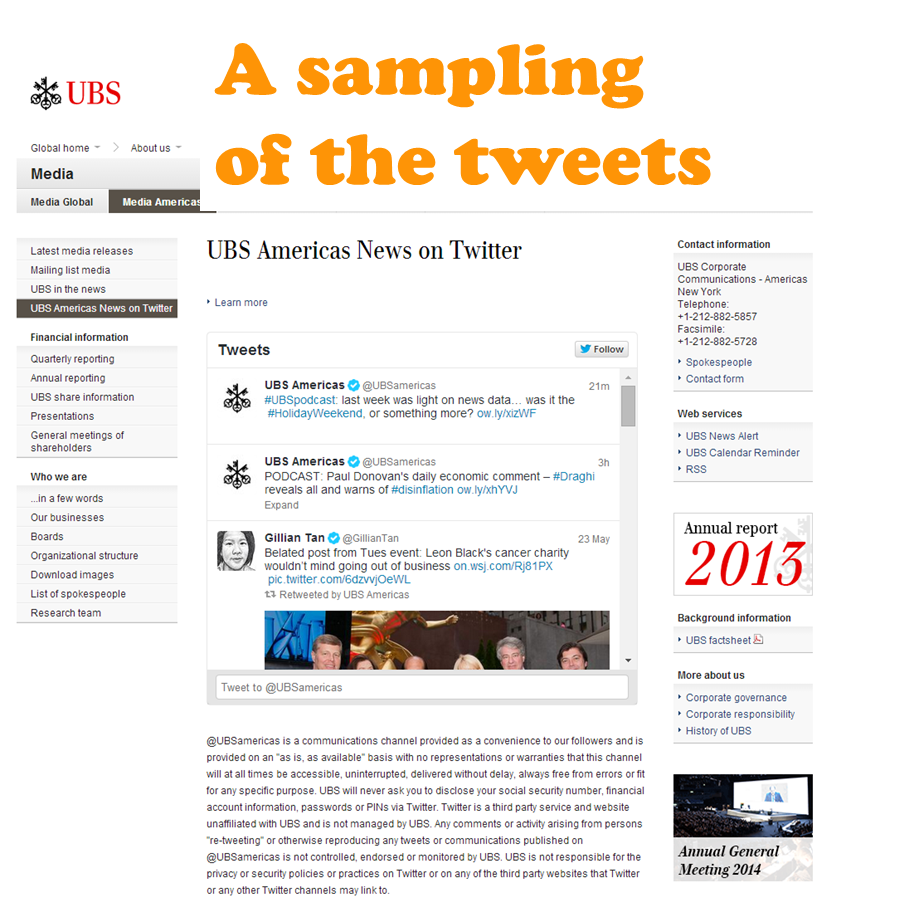
Yay—MainStay’s “legal notice page” includes an attempt to convert visitors to email subscribers. A sample of what to expect might also help drive signups.
This T. Rowe Price page can be arrived at from the firm’s Twitter or YouTube channel account. "Conversion" from this page would involve a gain in followers for other social accounts.
Finally, Natixis and Well Fargo Asset Management (shown below) include their own blogs in their landing pages’ social account listings.
When thinking about re-opening your own kettle of worms, review your Web analytics to see how your current “landing page” performs. That should tell you all you need to know about traffic sourced from social sites.
For additional perspectives on social media landing pages, also check out these posts from other sources:


